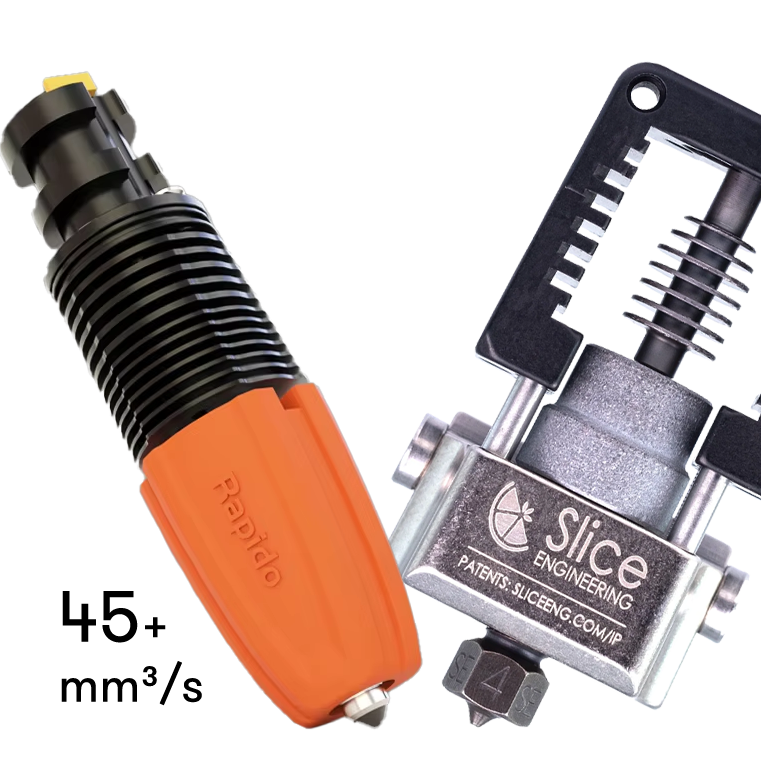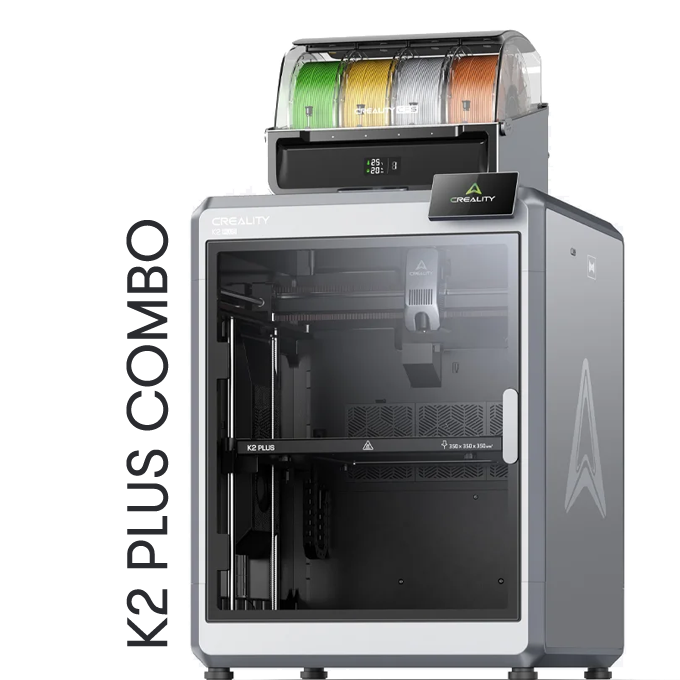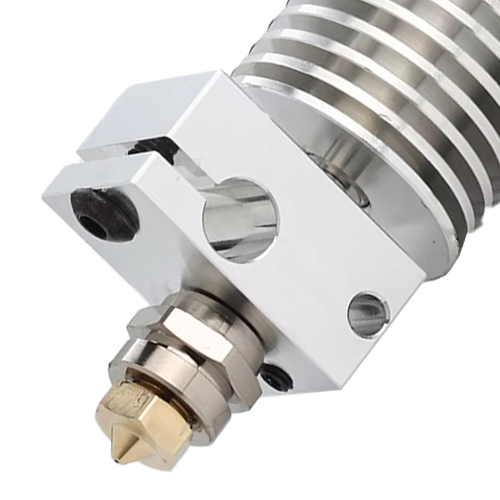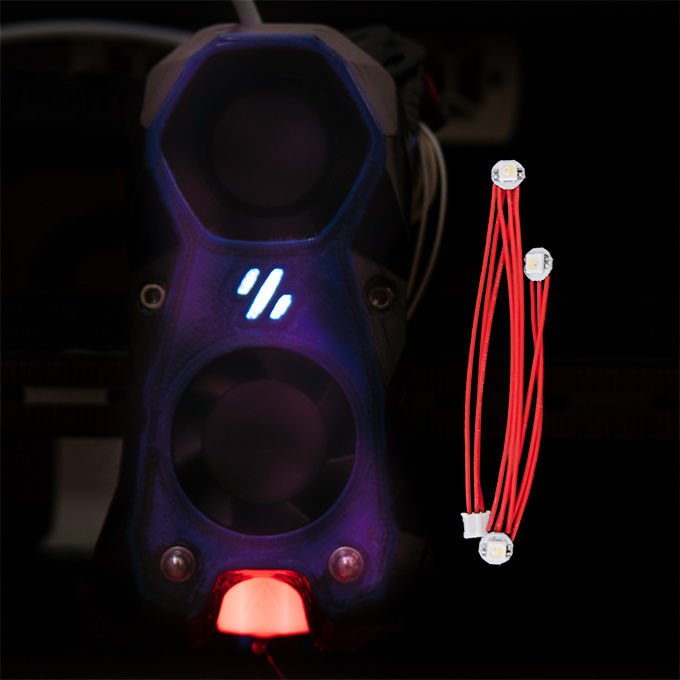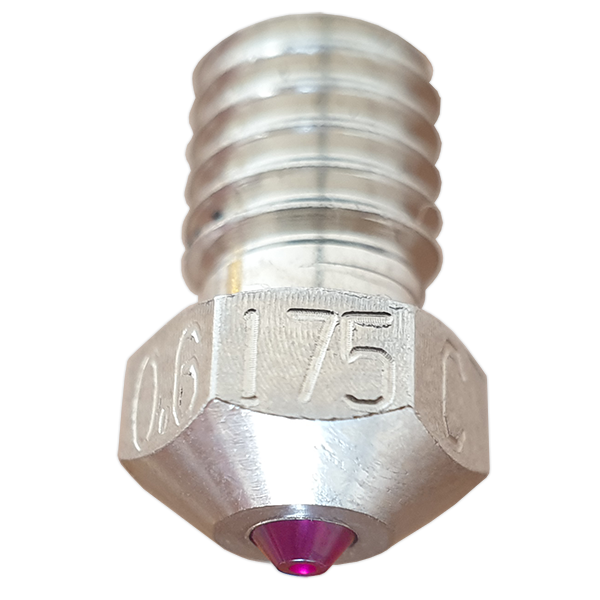High-flow hotends have gained significant attention in the 3D printing community due to their ability to enhance print speeds without sacrificing quality. The competition among manufacturers has led to the development of several leading products, including the Rapido, Mosquito, and various models from E3D.
This review examines the 3 best high-flow (HF) hotends based on their design, performance and compatibility with most 3d printers.
Do you need a high-flow hotend?
Upgrading your 3D printer with a high-flow hotend can significantly enhance your printing experience, but it’s essential to evaluate your current setup and needs before making the investment.
Here are some factors to consider that can help you determine whether an upgrade is necessary:
- Current Speed Limitations: If you’re consistently facing longer print times when reaching the flow limit of the current hotend, a high-flow hotend may help you achieve faster printing times. There are two case scenarios – normal printing speed at big layer height or fast printing speed (200+ mm/s) at high-resolution (0.2 layer height or smaller). In both cases an HF hotend could overcome the the under extrusion issues and assure consistent layers.
- Filament Types: If you frequently use materials that require higher flow rates and large nozzle sizes (such as flexible filaments or composite materials), a high-flow hotend is designed to handle these conditions more effectively.
- Compatibility with Upgraded Extruders: If you’re considering or already use a high-performance extruder, upgrading to a high-flow hotend can complement the extruder’s capabilities, leading to improved overall performance.
To sum-up and provide easy go/no go criteria, you will benefit from HF hotend if you use at least one of those:
- large nozzle (0.6 mm+)
- high layer height (0.3 mm+)
- fast printer (delta, corexy)
High flow hotends have a larger melt zone. This means more molten plastic in the hotend, which leads to less performance with retractions (more stringing than standard flow hotend).
Top 3 HF hotends in 2024/25
Our review focus are HF hotends within the E3D ecosystem – the largely adopted form factors for nozzles and hotends. It means each of these can be easily interchangeable and they can use the same nozzles.
1. Rapido Hotend
The Rapido hotend is engineered for high-speed printing, with a focus on efficient material flow. One of its key features is its innovative heat zone design, which allows for quick heat-up times and consistent temperature control.
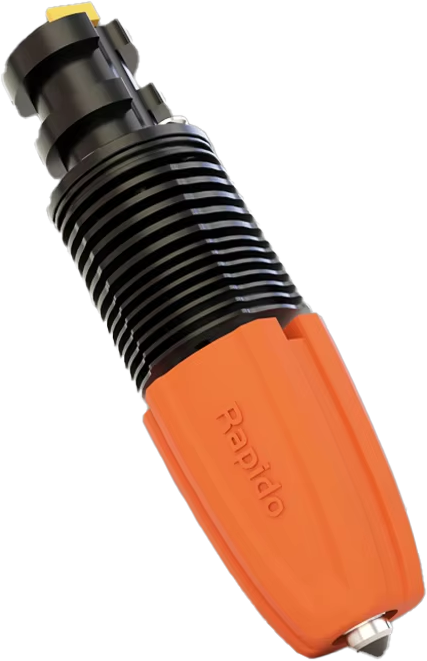
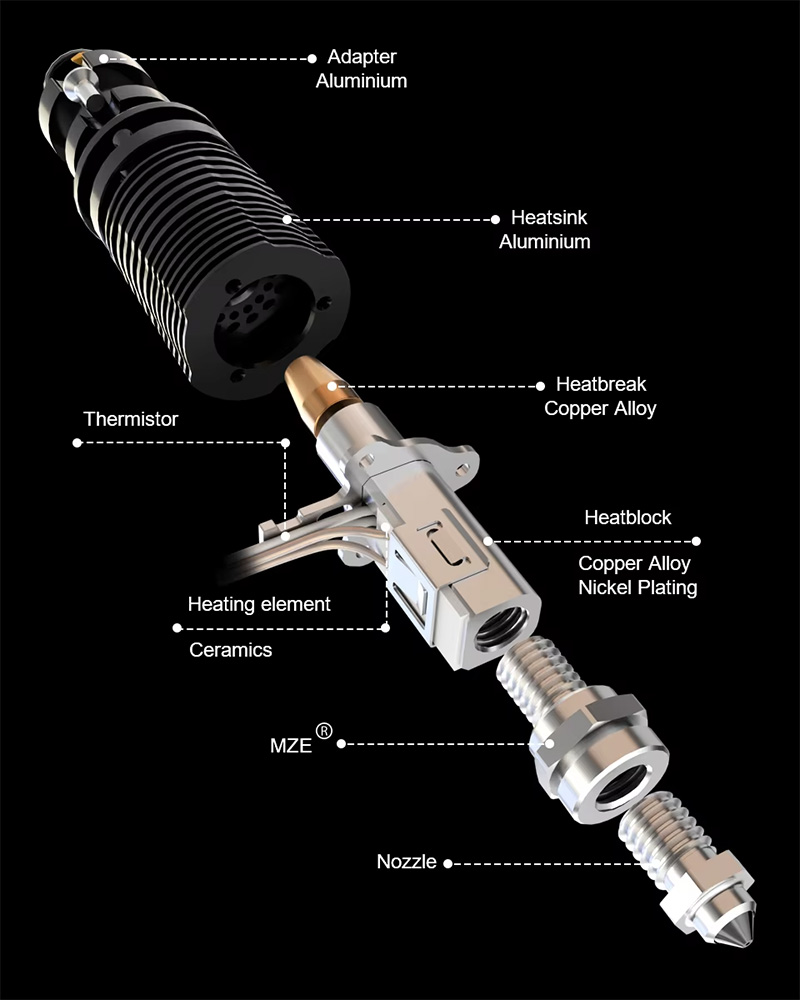
- Design: The Rapido HF/UHF features a modular design that simplifies maintenance and upgrades. It incorporates a unique nozzle system that supports various filament sizes while reducing the risk of clogs, enabling users to seamlessly transition between different materials.
- Performance: With an impressive flow rate, the Rapido can handle speeds of up to 500mm/s, depending on the material used. It excels with soft and flexible filaments but also performs well with standard materials like PLA and PETG. The dual heating element ensures that the filament reaches the ideal temperature swiftly, contributing to reduced print times.
- Applications: The Rapido is particularly favored in applications requiring rapid prototyping and high-volume production. Its ability to maintain print quality at high speeds makes it suitable for industries such as automotive, consumer electronics, and part manufacturing.
The Rapido range of high-flow (HF) and ultra high-flow (UHF) had many iterations since the initial launch in 2023. The latest Rapido ACE (end of 2024) offers design innovations that improve the maintenance, the compactness and the cost-effectiveness. That is why the ACE equipped with a PT1000 probe is our first choice.
2. Slice Engineering Mosquito Magnum
The Slice Engineering Mosquito Magnum hotend represents a significant advancement in high-flow 3D printing technology, designed for both professional users and advanced hobbyists.
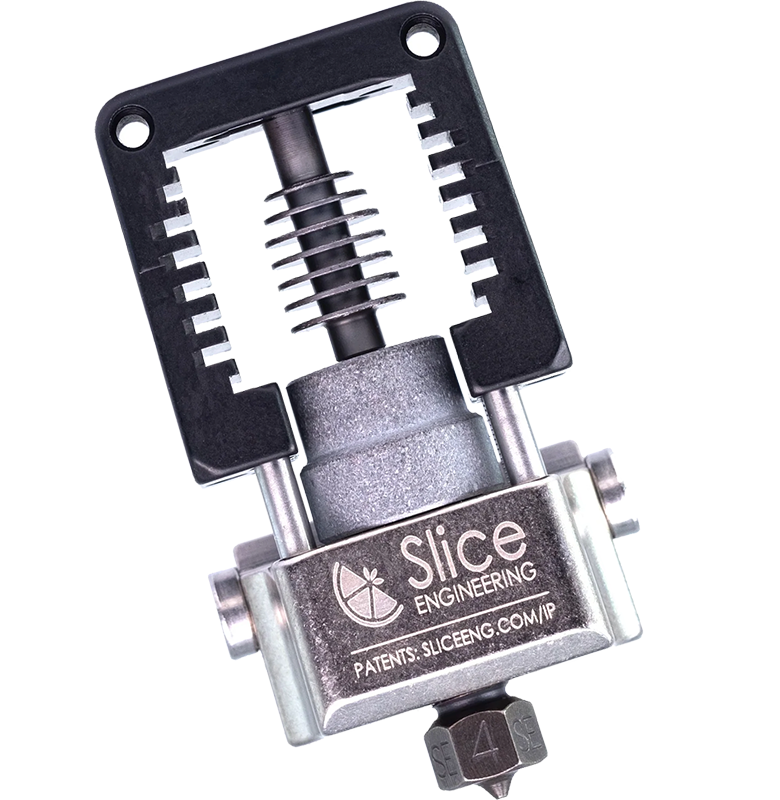
Technical Specifications:
- Nozzle Size: Available in configurations ranging from 0.4mm to 1.2mm, catering to various extrusion needs.
- Max Temperature: Capable of reaching temperatures up to 300°C, allowing for a wide range of filament compatibility, including high-temperature materials.
- Heat Break: Utilizes a specialized heat break that minimizes heat creep, ensuring better thermal stability and reduced risk of clogs.
Design Innovations: The Mosquito Magnum features a compact and modular design, making it easy to disassemble for maintenance or upgrades. Its unique thermal management system optimizes heat distribution, which is critical for high-flow applications. The hotend incorporates interchangeable components that allow for quick adjustments in flow rate and filament types.
Flow Rate: The Mosquito Magnum can achieve impressive flow rates, reaching up to 45mm³/s or more depending on the nozzle size and filament being used. It excels with flexible filaments, enabling smooth and consistent extrusion at high speeds, which is essential for producing high-quality prints quickly. When used with standard materials like PLA or PTFE, users can expect enhanced speeds without compromising detail.
Benefits for 3D Printing Speed: By significantly increasing flow rates, the Mosquito Magnum reduces print times, making it an attractive option for those involved in rapid prototyping or production environments. The ability to print large volumes or detailed designs quickly without sacrificing quality enhances overall efficiency.
Drawbacks: One notable downside is its high price point, which may deter some users. However, the investment can yield substantial improvements in speed and versatility for serious 3D printing applications, solidifying its place as a top choice in high-flow hotends.
3. Phaetus RAPIDO HOTEND 2
Probably you expected to see e3d Revo HF or Dragon hotend in the top 3 HF hotends? Well, this is another variation of the Rapido hotend – the Rapido V2 UHF PT1000 that gets the 3rd place.
If you are performance first – this is probably the best choice. With flow up to 75 mm³/s the UHF Rapido V2 is the unbeatable beast for large nozzles, big layer heights and fast speeds.
Conclusion
In summary, high-flow hotends are revolutionizing the 3D printing landscape by enabling faster production times while maintaining print quality.
Of course other options for 3d printing speeds boost are available to fine tune your setup and upgrade cost. Here we can mention the V6 upgrades – especially the one with CHT/HF nozzle.
Ultimately, the choice of hotend may depend on the specific printing requirements, types of materials used, and desired print speed. Each of these hotends contributes to the evolving capabilities of 3D printing, pushing the boundaries of what’s possible in additive manufacturing.
